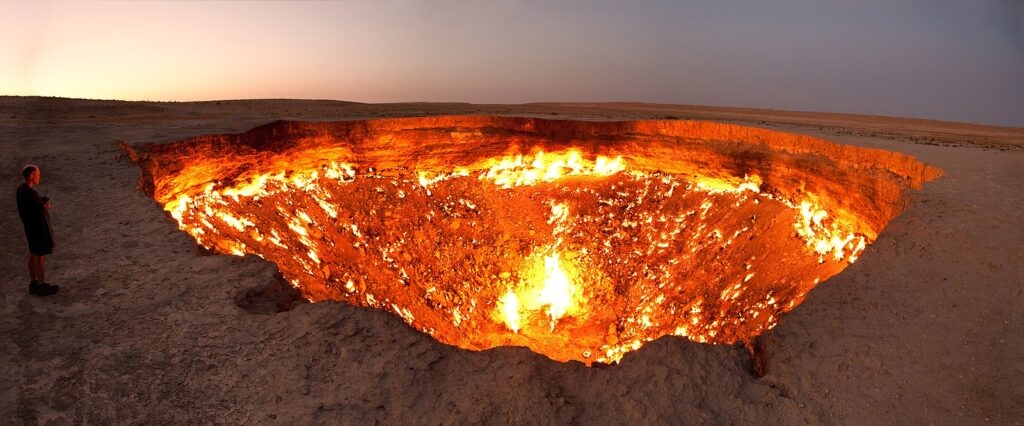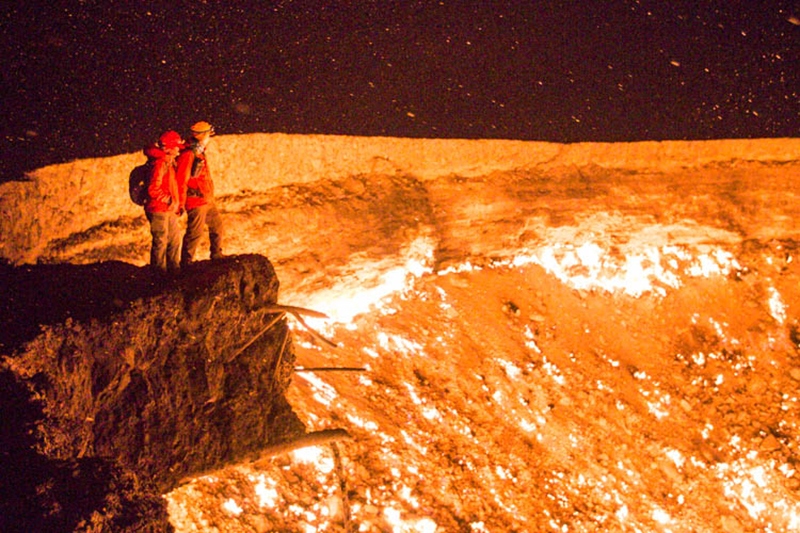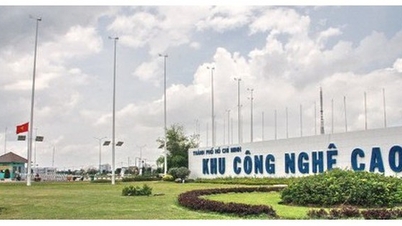Underground fires are not uncommon. In fact, they are a phenomenon that occurs across the globe, from the United States to Germany to China.
The most common underground fires are coal seam fires, where large amounts of coal are buried underground. The huge fuel supply combined with an endless supply of oxygen and the enormous cost of extinguishing them means these fires can last for years, decades, and even centuries.
Fires can also occur in large natural gas fields. Because of the toxic nature of natural gas to humans, it is not uncommon for natural gas fields to be intentionally set on fire in an attempt to burn out the fuel supply.
Unlike coal, however, it is nearly impossible to know how much natural gas is actually trapped beneath the Earth’s surface. So burning it all off is always a gamble, as is the case with the decades-long fire at the Darvaza crater in Turkmenistan.

The Gates of Hell is the Darvaza Crater, located in the Karakum Desert of Turkmenistan.
The Origin of “The Gates of Hell”
The Darvaza Crater, located in Turkmenistan’s Karakum Desert, is 70m across and 20m deep. Flames burst from every nook and cranny of the rocks surrounding the crater as natural gas seeps through.
This place is also known as the "Gateway to Hell" because of the endless fire that has been burning for more than 50 years.
Images of flames burning inside the crater, along with unconfirmed stories about its origins, have made the “Gateway to Hell” a popular tourist attraction in Turkmenistan.
No one knows how the Darvaza crater formed as there are no written records or eyewitness accounts of its formation. However, there are two main hypotheses about the formation of the crater.
The most common explanation is that Darvaza was the site of a Soviet drilling rig collapse in the 1970s. Workers were digging when they realized they had hit an underground cave-in. They fled the scene as the ground began to give way beneath them, swallowing the equipment.
Then, to prevent the toxic gas from spreading to the surrounding area, engineers set the crater on fire. But they didn't think it would burn for so long.
Meanwhile, geologists believe that the Darvaza crater was discovered in the 1960s but it was not burned until the 1980s to prevent natural gas from leaking into surrounding communities.
Efforts to extinguish the fire
In 2010, Turkmenistan President Gurbanguly Berdymukhamedov asked scientists to find a way to extinguish the flames of the Gates of Hell.
However, extinguishing the endless flames of underground natural gas is nearly impossible. Even if the entire crater is sealed, just a small gap will allow the gas to escape and re-ignite.

The Darvaza Crater is a popular tourist attraction, attracting curious people who want to see the Gates of Hell with their own eyes.
In 2022, President Berdymukhamedov reaffirmed his desire to extinguish the Darvaza crater, citing the impact on the environment as well as the health of local residents.
The endless flames continuously release methane gas into the atmosphere and affect the people of the nearby town of Darvaza (or Derweze).
In addition, President Berdymukhamedov also said that this crater is also wasting Turkmenistan's natural resources. If the fire is extinguished, Turkmenistan can exploit natural gas as fuel and improve the country's economy . Turkmenistan is the country with the fourth largest natural gas reserves in the world.
In 2013, explorer George Kourounis became the first person to climb down to the Darvaza crater. Kourounis had just 17 minutes to descend to a depth of more than 30m, taking gas readings and soil samples before being hoisted out.
The explorer said that when he dug the ground to collect samples, new flames immediately appeared. Even the smallest new crack in the crater's mouth created an escape route for gas to escape from the ground and ignite the flames.
Half a century later, the fire shows no signs of stopping. It looks like the Darvaza crater will continue to burn for some time to come. If left alone, no one knows how long it will burn or how much gas is still trapped underground.
Experts agree that any attempt to close the Gates of Hell would be cumbersome, dangerous, expensive, and arguably fruitless. In the end, perhaps the best option is to do nothing. So the Darvaza crater will remain a tourist attraction for curious people who want to see the Gates of Hell for themselves.
Source






![[Photo] Discover unique experiences at the first World Cultural Festival](https://vphoto.vietnam.vn/thumb/1200x675/vietnam/resource/IMAGE/2025/10/11/1760198064937_le-hoi-van-hoa-4199-3623-jpg.webp)























![[Photo] General Secretary attends the parade to celebrate the 80th anniversary of the founding of the Korean Workers' Party](https://vphoto.vietnam.vn/thumb/1200x675/vietnam/resource/IMAGE/2025/10/11/1760150039564_vna-potal-tong-bi-thu-du-le-duyet-binh-ky-niem-80-nam-thanh-lap-dang-lao-dong-trieu-tien-8331994-jpg.webp)







































































Comment (0)